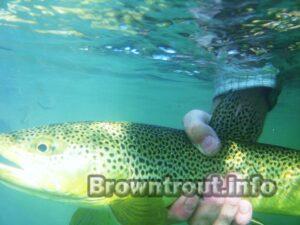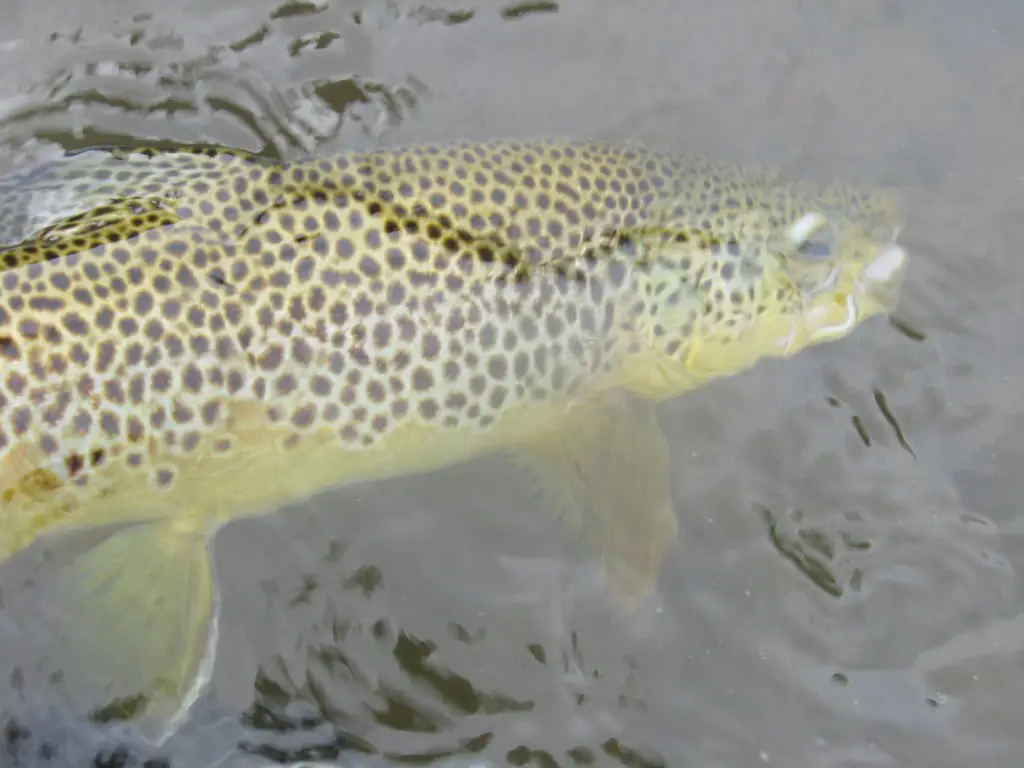This post was last updated on August 6th, 2022 at 06:10 pm
Brown Trout Facts
Fact #1.

These trout eat more than 90% of their food sub surface. So next time you are dead set on fishing dry flies you might want to reconsider. There are certainly days where you will catch more fish on the surface during a hatch, but not always. Keep this in mind next time you are out fishing for the elusive monster brown trout (Salmo trutta).
Throughout the entire year there are always nymphs and baitfish available underwater for the trout to eat, but there certainly aren’t always flies on the surface of the water. The trout often times just won’t be watching the surface for food. You can float over them all day with a dry fly, if they aren’t looking you aren’t going to catch them.
Fact #2.
Did You know that many brown trout live in the sea? There are healthy populations of these fish that live in saltwater. They spend most of their lives eating the plentiful supplies of bait fish in the salt and brackish water. They will migrate annually to fresh water in order to breed.
Their natural instinct is to ascend rivers to breed, and they will often go as far as they can get in order to do so. The same applies to these fish in the great lakes. They spend most of their lives in deep water out in the lakes, only coming in to rivers to spawn. They usually spawn in October and November, this is one of the few times in many of their lives that they are susceptible to predation.
The spawning migration also coincides with the migration of the salmon. This will frequently lead to very large lake/sea run’s accidentally being caught by salmon fisherman, that otherwise would not have been caught.
Fact #3
Brown trout can lay more than 10,000 eggs! The survival rate of an individual trout egg is infinitesimally small. Out of the thousands of eggs that are laid by a spawning brown, very few will ever make it to adulthood to spawn themselves. It would be a common scenario for most of the eggs to never have the opportunity to hatch.
Of the few that hatch, very few would make it past a few weeks of age. The surviving trout that make it past the “fry” stage will have a great survival instinct, know where to hide and where they are safe. Once they reach a few inches they will begin to grow quickly, but they are still threatened throughout their life by birds, other trout and of course fisherman.
Brown trout can’t successfully reproduce in stillwater, such as lakes. Their eggs need cold, moving water to survive. Their eggs are laid in gravel beds called “redds.”
Fact #4.
The Brown trout has been stocked in 45 states in the US. There is a self sustaining population in 34 of the 50 states. They need temperatures that are relatively cold for its survival. Many states have tried to stock them  but were unsuccessful. The preferred temperature is 56-66 degrees F. They can tolerate a lot warmer water than many other trout (well above 7oF), but still need cold oxygen rich water to thrive.
but were unsuccessful. The preferred temperature is 56-66 degrees F. They can tolerate a lot warmer water than many other trout (well above 7oF), but still need cold oxygen rich water to thrive.
For more facts about this species you can check out a few of the pages below:
- Brown Trout Information
- Trout Foods
- Fishing for Brown Trout
- Spawning and Breeding Habits
- The World Record Fish

